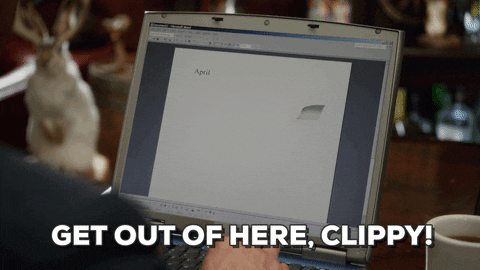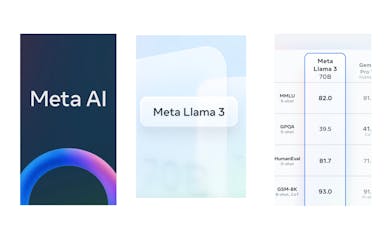Using AI to improve web accessibility
Find out more about the current state of web accessibility, the tools available that use AI technology, and advice on incorporating them into your own products.
The state of web accessibility today
Web accessibility is a crucial aspect of web development, with the goal of making digital interfaces usable by everyone.
Through careful planning in design, development, and testing, we’ve come a long way in making a more accessible web.
However, despite the advancement of technology and increased awareness, many websites and applications remain inaccessible for people with disabilities, with around 96.3% of home pages having detectable Web Content Accessibility Guidelines (WCAG) failures.
This lack of accessibility hinders users from performing everyday tasks online, such as ordering groceries, accessing government services, or staying connected with friends and family.
In this article we’ll take a look at how we can make the world more accessible using AI.
The age of accessible machines
In the book Age of Invisible Machines, author Robb Wilson describes a highly automated future where AI serves as both the digital infrastructure and a fundamental component of the user interface.
The hallmark of a great user experience is an interface that caters to the user's needs without getting in the way. To achieve this, the interaction needs to be as natural as possible. Now, with advancements in natural language processing and understanding, we can create natural user interfaces by using human language.
Struggling with complex interfaces are soon to be a thing of the past. Instead, users will simply communicate with the software to access the information they need. This is the promised future of voice assistants like Alexa and Siri, or even Clippy.

Improving accessibility using AI
AI shows real potential in revolutionizing web accessibility by delivering more personalized, adaptable, and innovative solutions to accessibility challenges. Some examples of how AI can enhance web accessibility include:
1. Accessible interfaces through language models
Advanced language models, like OpenAI's ChatGPT, can generate and interpret natural language to make interfaces more intuitive and easy to navigate for users with cognitive or motor impairments. These models can also provide real-time assistance by helping users understand complex information, navigate through confusing web layouts, or even draft emails and messages through speech or text completion.
An early example of this type of application is Monica, a browser extension powered by ChatGPT that can generate copy, translate, rephrase, and explain text on any web page.
2. Voice synthesis
Speech recognition and text-to-speech technologies powered by AI can help users with visual or hearing impairments interact with digital content more naturally.
AI-powered voice synthesis tools like Murf AI can also assist users who have speech impairments by generating natural-sounding speech in real time, enabling smoother communication with others and improved access to voice-activated services.
Deep Agency takes this a step further, letting you “hire” virtual models and create a virtual twin with an avatar that looks like you.
3. Computer vision
AI-powered computer vision can assist users with visual impairments by interpreting images, video, and other forms of visual data. It converts this information into formats that are more accessible, such as text or audio descriptions, allowing users to get a clearer understanding of the visual content.
ChatGPT for YouTube, for example, provides text summaries of any video via a Chrome extension.
Computer vision could also be used to allow people to communicate directly with their systems using sign language or other visually based communication methods.
4. AI-powered accessibility features
Many existing AI-powered features are already working towards improving web accessibility.
For example, Google's Live Transcribe and Sound Amplifier apps provide real-time transcription of speech for those who are deaf or hard-of-hearing, and zooming features on-screen for those with vision impairments.
Similarly, Microsoft's Seeing AI app uses AI-based computer vision to identify and describe objects, text, and people for users who are blind or visually impaired, enhancing their understanding of their surroundings and making digital content more accessible.
Most recently, an MIT spin-off called MouthPad^ is a tongue-driven interface that controls your computer, smartphone, or tablet via Bluetooth. Virtually invisible to the world, it is positioned across the roof of your mouth to put all of the power of a touchpad in the tip of your tongue.
Challenges of implementing AI for accessibility
Despite the huge potential of AI in improving web accessibility, there are several challenges that need to be addressed in order to ensure we are addressing the needs of all users. Some of these challenges include:
1. Managing bias
AI systems are only as good as the data they are trained on. It is important to put in place measures to ensure that datasets are balanced and representative of diverse users. This helps prevent bias, which can have detrimental effects on web accessibility.
2. Prioritizing accessible code
While training AI models, it is essential to prioritize accessible code. This will ensure that the generated content follows accessibility guidelines and can be easily interpreted by assistive technologies. This will lead to a better user experience for those who rely on them.
3. Ethical considerations
It is important to note that the use of AI for accessibility should complement and augment human expertise, not replace it. The expertise of accessibility professionals is still necessary to ensure that the implementation of AI solutions adheres to ethical guidelines and maintains human-centered design principles. This will help ensure that the solutions are effective and beneficial to the users who rely on them.
4. Customization of AI solutions
AI solutions should be able to be customized to individual needs. This will ensure that the solutions are tailored to the specific needs of the users, and can help ensure that they are effective in improving web accessibility.
The Role of Developers in Ensuring Web Accessibility through AI
Developers play a crucial role in improving web accessibility through AI by ensuring usability, effectiveness, and inclusivity. They must actively seek feedback and engage in testing with real users in order to create AI-powered features that cater to diverse needs.
From a product and web design perspective, it's encouraging to see tools like STUDIO AI prioritize and mention accessibility in the features of their next-gen web design tool. (The platform uses ‘WebDesignAI’ to autocomplete a variety of complex design tasks based on text or voice prompts, such as “Up the contrast a bit for accessibility.”)
By incorporating human input, developers can mitigate biases, address unique user requirements, and ensure that AI-based accessibility features are not only user-friendly but also reliable and genuinely beneficial to all users. This human-centric approach is essential for creating more inclusive and accessible technology.
You can learn more about working towards inclusive and accessible AI by checking out Pursuit of Inclusive AI and the Guidelines for Human-AI Interaction.
Closing Thoughts
As AI continues to evolve, it has the power to make the online world a more welcoming and inclusive place.
By discovering new ways to use AI, fine-tuning the technologies we already have, and advocating for inclusive and accessible systems, we're moving towards a brighter digital future for everyone.
Author: Josh Mabry, Engineer at Knapsack
Comments (7)
Lindsay Jones
Head of Marketing at Knapsack
Dani
Tinkerer | Daydreamer | Solarpunk ☀️
Elissa Craig
Marketing Manager @ Headliner
Dereck
HR
Kerry
storyteller
More stories

Kyle Corbitt · How To · 3 min read
What we've learned in 3 days of Llama 3

Aaron O'Leary · Announcements · 2 min read
Introducing Shoutouts

Finn Lobsien · Opinions · 5 min read
Can Devin AI Replace Product Managers?

Aaron O'Leary · News · 2 min read
Meet Nvidia's new localized AI chatbot

Sarah Wright · News · 2 min read
The top 15 AI products from 2023

